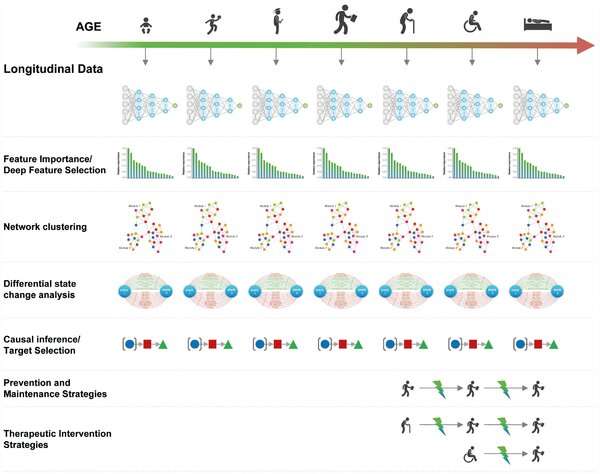Deep biomarkers of aging and longevity: From research to applications

The deep age predictors can help advance aging research by establishing causal relationships in nonlinear systems.
Deep aging clocks can be used for identification of novel therapeutic targets, evaluating the efficacy of various interventions, data quality control, data economics, prediction of health trajectories, mortality, and many other applications.
Dr. Alex Zhavoronkov from Insilico Medicine, Hong Kong Science and Technology Park, in Hong Kong, China & The Buck Institute for Research on Aging in Novato, California, USA as well as The Biogerontology Research Foundation in London, UK said "The recent hype cycle in artificial intelligence (AI) resulted in substantial investment in machine learning and increase in available talent in almost every industry and country."
Over many generations humans have evolved to develop from a single-cell embryo within a female organism, come out, grow with the help of other humans, reach reproductive age, reproduce, take care of the young, and gradually decline.
Considering the average age of the Olympic athlete, the age of optimal performance can be safely defined as 20-30.
Lifestyle and behavioral modifications may help slow down the decline and keep the organism in the best possible state for its chronological age, a term commonly referred to as healthy aging.
To understand the differences between the healthy aging and unhealthy aging, evaluate the effects of the many lifestyle choices and a variety of emerging longevity interventions, it is essential to be able to track the rate of aging and develop a comprehensive set of aging biomarkers.
The Zhavoronkov Research Team concluded that Developing comprehensive granular multi-modal aging clocks will help get a better understanding of the aging processes, establish causal relationships, and identify preventative and therapeutic interventions.
One of the many promising applications of the deep aging clocks built into the generative adversarial networks is generation of synthetic biological data with age as a generation condition.
More information: Alex Zhavoronkov et al, Deep biomarkers of aging and longevity: from research to applications, Aging (2019). DOI: 10.18632/aging.102475



















